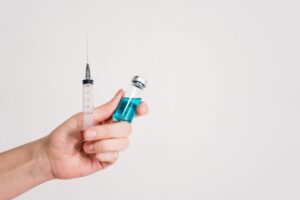The journey to better health often comes with complex questions, and for many men, testosterone replacement therapy (TRT) is a powerful tool to regain energy, libido, and a sense of well-being. But if you’re a man of reproductive age, or if you simply want to keep your options open for the future, a crucial question will inevitably come up: how to maintain fertility on trt? The truth is, while TRT is excellent for addressing the symptoms of low testosterone, it can be a major roadblock to fatherhood.
This isn’t a topic that should be taken lightly. It requires careful planning and an open conversation with your healthcare provider. The good news is that with the right approach and a clear understanding of the science, you can often enjoy the benefits of TRT without sacrificing your ability to start a family. This article will walk you through the ins and outs of TRT and fertility, helping you create a strategy that supports both your personal health and your future family plans.
Can TRT Impact Male Fertility?

The answer is a definitive yes, and it’s a surprise to a lot of men. The relationship between TRT and fertility is a little counterintuitive. We all know that testosterone is a vital male hormone, so you might think that giving your body more of it would boost fertility. In reality, the opposite is true.
When you introduce external testosterone into your system, your body’s natural hormone production system gets a signal to shut down. This system, known as the hypothalamic-pituitary-gonadal (HPG) axis, controls everything from testosterone to sperm production. It works like this:
- Your brain releases a hormone called GnRH.
- GnRH tells your pituitary gland to release Luteinizing Hormone (LH) and Follicle-Stimulating Hormone (FSH).
- LH and FSH travel to your testicles, telling them to produce testosterone and sperm.
When you start TRT, your brain detects the high levels of testosterone in your bloodstream and decides it doesn’t need to send out the signals anymore. This leads to a dramatic suppression of LH and FSH, which in turn causes your testicles to stop producing their own testosterone and sperm. For many men, this leads to a significant decrease in TRT and sperm count, with some men becoming azoospermic (having no sperm in their semen) within a few months of starting therapy. This is why TRT has been researched as a form of male contraception.
The impact is often temporary and reversible, but it is a serious consideration. This is why it is so important to have a plan in place from day one.
Read also: The HCG Protocol: How Often To Take HCG on TRT?
Recommendations before starting TRT
Before you ever start a TRT regimen, it’s crucial to take a few key steps to ensure you’re making the right decision for your health and your future.
1. Explore lifestyle changes to boost testosterone naturally
Before you commit to hormone therapy, a responsible doctor will likely recommend exploring lifestyle changes. For men with borderline low testosterone, a few simple adjustments can sometimes be enough to bring levels back to a healthy range.
- Exercise: Regular strength training and high-intensity interval training (HIIT) can significantly boost testosterone.
- Diet: Eating a balanced diet rich in healthy fats, protein, and micronutrients like zinc and vitamin D is essential for hormone production.
- Sleep: Getting 7-9 hours of quality sleep each night is non-negotiable for hormonal health.
- Stress Management: High cortisol levels from chronic stress can suppress testosterone production. Practicing mindfulness, meditation, or finding a relaxing hobby can make a real difference.
2. Discuss your goals with your doctor
This is arguably the most important step. You need to have an open, honest, and direct conversation with your doctor about your family planning goals. It’s crucial that they know if you are actively trying to conceive, or if you want to preserve your fertility for the future. The conversation should not be a rushed one. Your doctor needs to understand your full medical history and your personal priorities to recommend the right course of action. They may suggest a non-suppressive therapy, like HCG monotherapy, or they may refer you to a reproductive endocrinologist.
3. Check your sperm count
Before you start any therapy, it’s a good idea to get a baseline semen analysis. This simple test will give you a clear picture of your current sperm count, motility, and morphology. Having this data is invaluable. It will help your doctor determine the best course of action and serve as a benchmark to measure the effectiveness of any fertility-preserving protocols you decide to use.
4. Sperm freezing
For many men, this is the most proactive and secure option. Sperm freezing, or cryopreservation, allows you to preserve your fertility before you ever start TRT. It’s like an insurance policy for your future. The procedure is non-invasive and gives you peace of mind that you can move forward with TRT without having to worry about your ability to start a family years down the line. It’s the most reliable way to ensure you can have a biological child.
Read more: Do You Have to Be on TRT Forever? The Truth
Protecting fertility while on TRT

So, you’ve started TRT and have decided you want to protect your fertility. Now what? The most common and effective method to how to maintain fertility on trt is to add another hormone to your regimen: Human Chorionic Gonadotropin, or hCG.
Licensed by Google
HCG works by mimicking the body’s natural Luteinizing Hormone (LH). Since TRT suppresses LH, injecting hCG acts as a substitute, telling your testicles to stay active and continue producing both testosterone and sperm. By using hCG alongside TRT, you can get the benefits of the external testosterone while keeping your internal “factory” running.
A typical HCG protocol for fertility involves injecting a small dose of hCG a few times a week. A common protocol is 250 IU to 500 IU injected every other day. The goal is to provide consistent, low-level stimulation to the testicles to prevent them from atrophying and to keep them producing sperm. This is not a one-size-fits-all approach, and your doctor will tailor the dosage based on your blood work and, if necessary, semen analysis.
For some men, this combined therapy is enough to maintain a viable sperm count. However, it is not a guarantee. Some men may still experience a drop in sperm count, even with hCG. Other options for maintaining fertility while on TRT include using a SERM (Selective Estrogen Receptor Modulator) like clomiphene citrate, which can stimulate the release of LH and FSH from the pituitary.
Long-term fertility considerations
While adding hCG to your protocol can be an effective way to maintain fertility on TRT, it’s also important to consider the long-term picture. It’s not uncommon for men to be on TRT for years, and the longer your body’s natural system is suppressed, the more difficult it can be to restart it. The question of “can you have a baby on TRT” is more complex than a simple yes or no. The answer is often “it depends,” and a man’s long-term success at fathering a child while on TRT is highly dependent on his adherence to a proper protocol.
For many men who have been on TRT for a long time, the only way to restart their natural fertility is to come off TRT completely. This can be a challenging process, as it can take several months for the body to start producing testosterone and sperm again, and a man will likely experience the symptoms of low T once more during this period. For this reason, men who are committed to having a family should prioritize a short-term, fertility-focused strategy.
Is TRT for me if I want a family soon?
If you are actively trying to conceive or plan to in the next year or so, most experts would recommend against starting TRT. While it may feel frustrating to wait, the risk of a significant drop in sperm count is too great. The best approach is to explore alternative therapies that can boost your testosterone without suppressing your natural production.
One of the most effective options is HCG monotherapy. Instead of taking TRT and hCG, a doctor can prescribe hCG alone. The hCG will stimulate your testicles to produce more of your own testosterone, while also supporting sperm production. This can address the symptoms of low T while protecting your fertility. Another option is clomiphene citrate, an oral medication that works similarly to hCG by telling your brain to release more of the hormones that stimulate your testicles.
For TRT for men trying to conceive, the most responsible approach is to work with a doctor who is a specialist in this area. They can help you explore all of the available options and create a plan that aligns with your timeline.
How We Can Help
Navigating all of this can be overwhelming, and you shouldn’t have to do it alone. If you’re in the Houston area and you’re a man of reproductive age experiencing the symptoms of Low T, our team at PuurHW is committed to providing comprehensive, personalized care. We work with you to understand your health and family goals, so we can build a treatment plan that helps you feel your best without compromising your ability to have a family.
Conclusion
The question of how to maintain fertility on trt is one that requires careful thought and a proactive approach. TRT can significantly impact fertility by suppressing the body’s natural hormonal production. However, by taking the right steps—like discussing your goals with your doctor, getting a baseline sperm count, or even considering sperm freezing—you can move forward with confidence. For many men, adding a secondary medication like hCG to their protocol is a highly effective way to protect their fertility. The key takeaway is that your journey to better health doesn’t have to compromise your dreams of a family. With the right medical guidance and a personalized plan, you can effectively navigate the complexities of TRT and fertility and achieve both of your goals.


